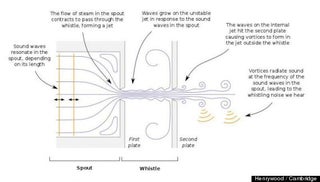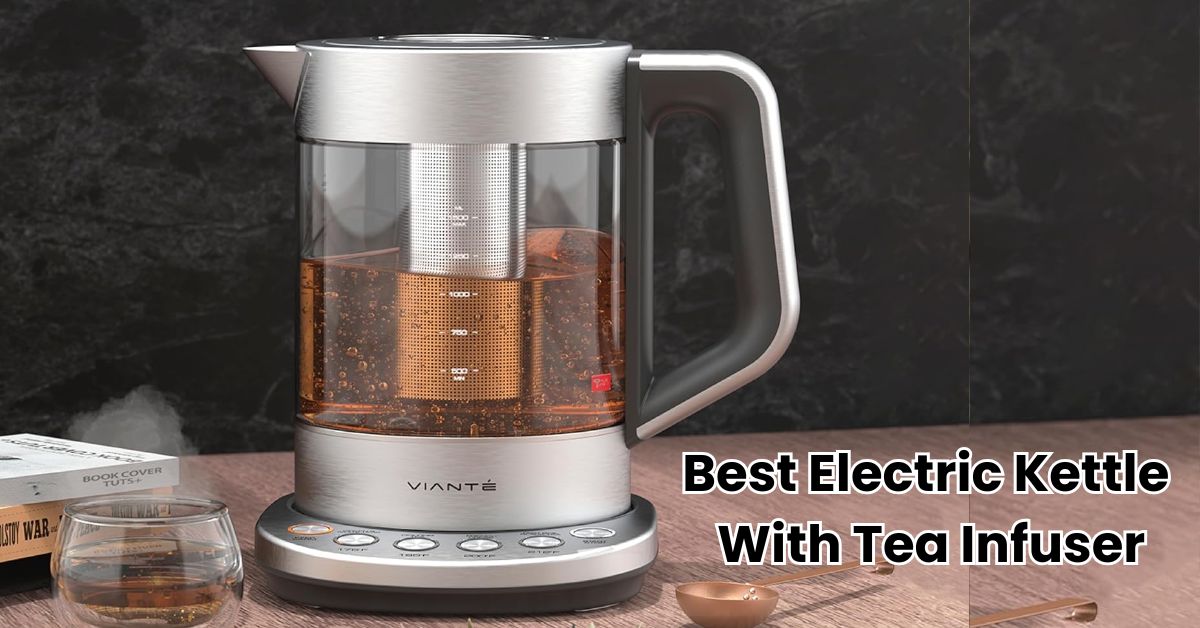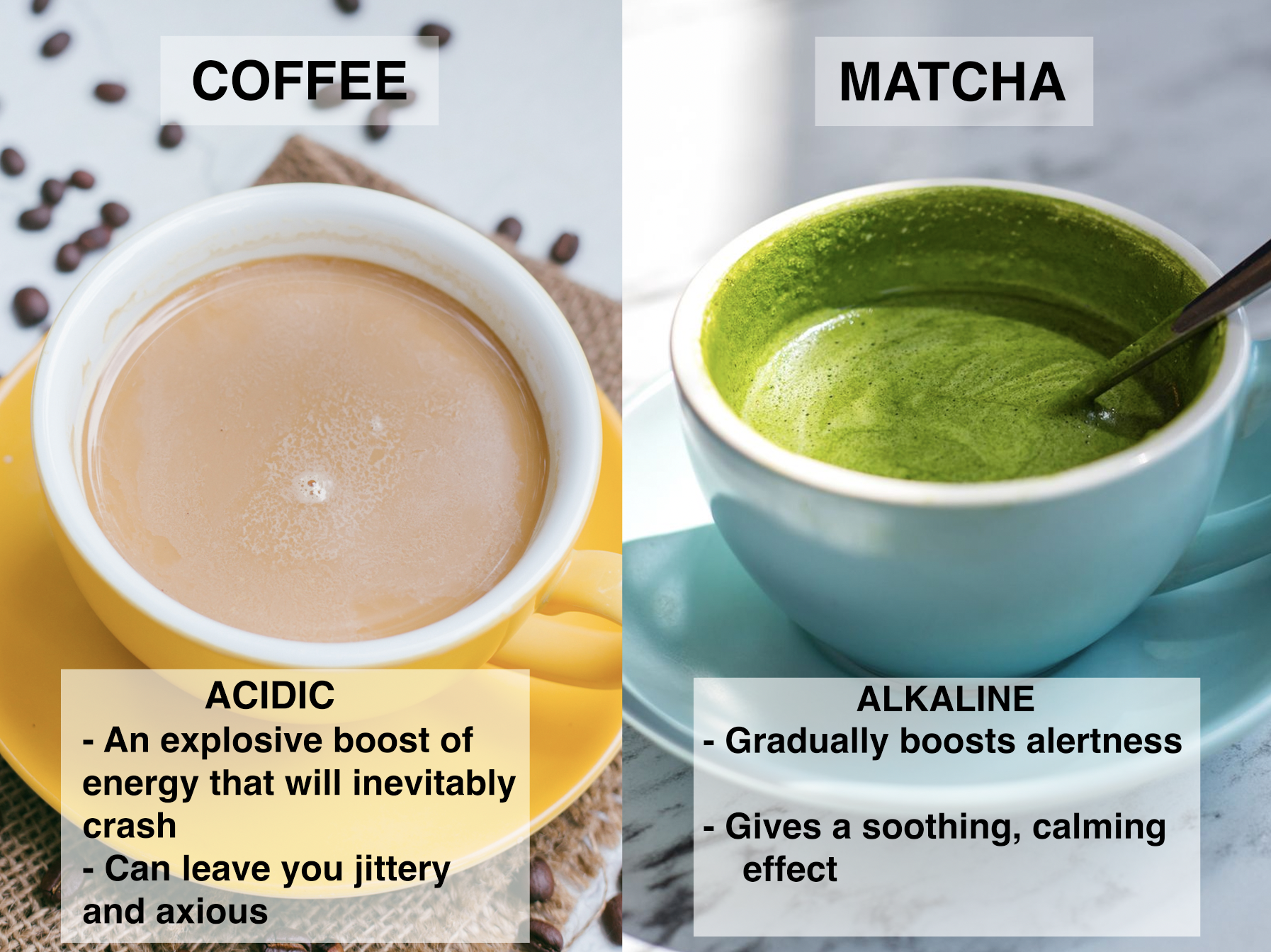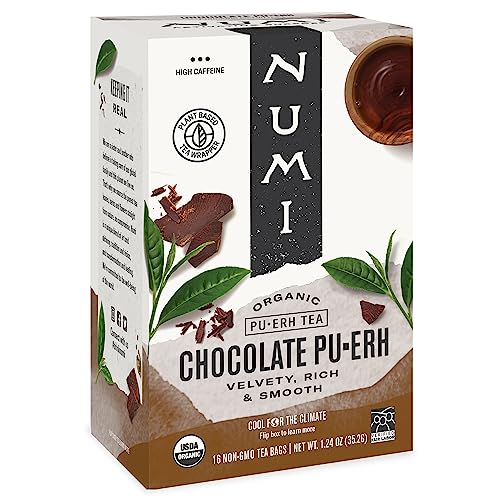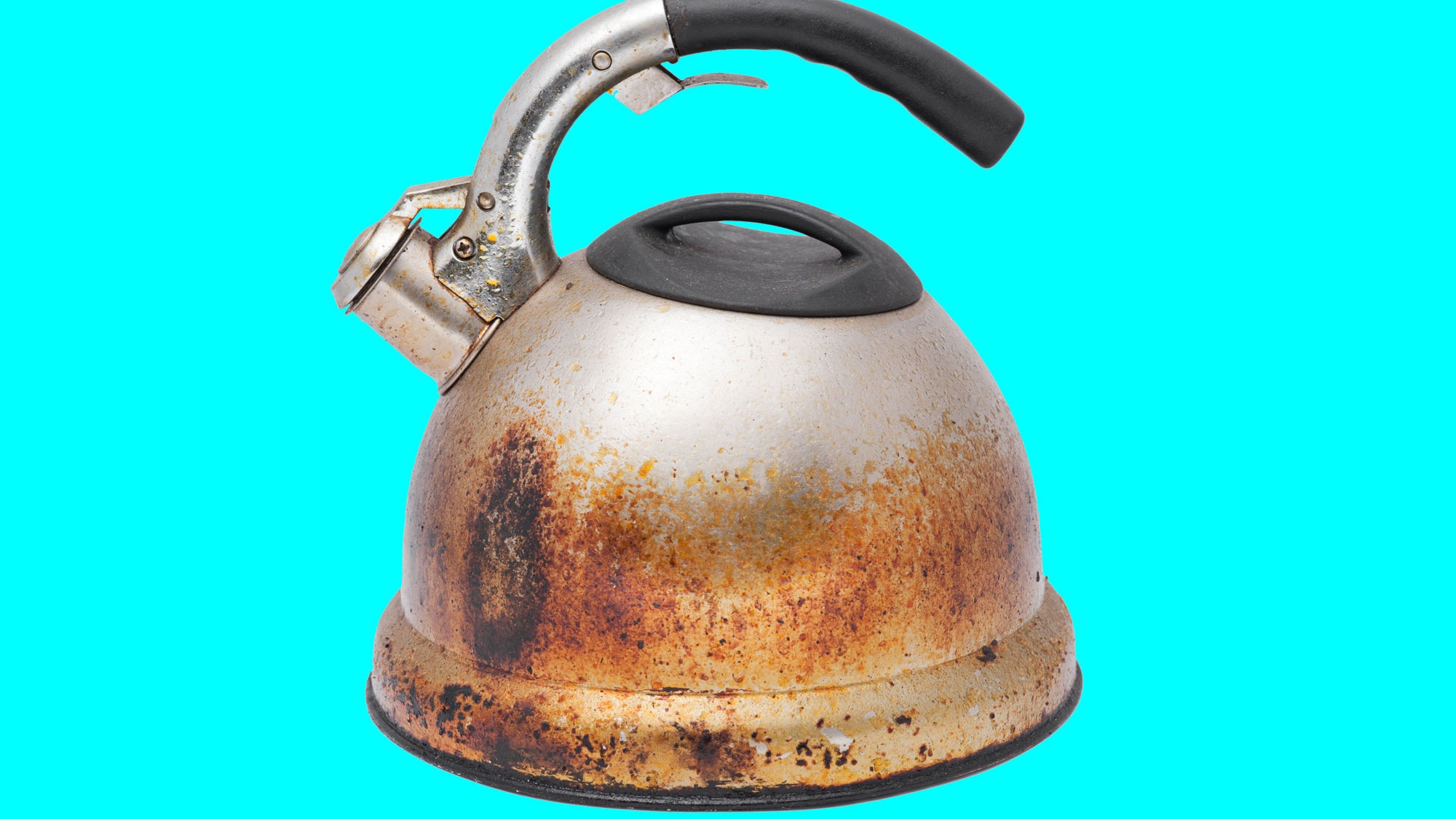Fixing a tea kettle whistle can be simple. Most issues are easy to resolve.
In this blog, you’ll learn quick solutions to get your tea kettle whistling again. Tea kettles are common in many kitchens. The whistle tells you when water boils. But sometimes, the whistle may stop working. This can be frustrating, especially if you’re in a hurry.
There are a few reasons why this happens. It could be due to a blocked spout, a damaged whistle, or mineral deposits. Understanding these issues can help you fix the problem. By following the steps in this guide, you can enjoy the sound of your tea kettle again. Let’s get started on fixing that whistle!
Identifying The Problem
Is your tea kettle whistle not working as it should? Identifying the problem is the first step in getting your tea kettle back in action. This guide will help you pinpoint the issue and find the right solution.
Common Whistle Issues
There are several common problems that can affect your tea kettle’s whistle. These include:
- Blocked spout: Limescale or debris can block the spout, stopping the whistle.
- Loose lid: If the lid is not tight, steam escapes, and the whistle won’t work.
- Damaged whistle mechanism: The whistle may be broken or worn out.
Signs Of A Faulty Whistle
How can you tell if your tea kettle whistle is faulty? Look for these signs:
- No sound: The kettle boils, but no whistle is heard.
- Weak whistle: The whistle is faint and hard to hear.
- Intermittent whistle: The whistle starts and stops erratically.
If you notice any of these signs, it is time to inspect your tea kettle. Identifying the problem early can save you time and effort in finding the right fix.
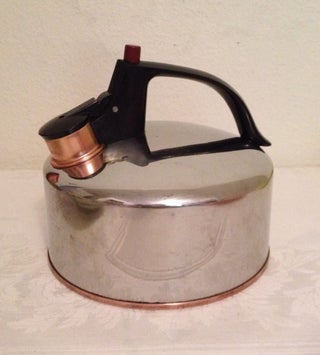
Credit: www.instructables.com
Cleaning The Whistle
A tea kettle whistle can get clogged with debris over time. This can cause the whistle to malfunction or produce weak sounds. Cleaning the whistle can help restore its functionality. Below are detailed steps to clean the whistle effectively.
Removing Debris
First, inspect the whistle for visible debris. Small particles can block the airflow. Use a thin brush or a toothpick to remove any debris. Be gentle to avoid damaging the whistle.
- Inspect the whistle
- Use a thin brush or toothpick
- Remove visible debris
Using Vinegar Solution
If removing debris manually doesn’t work, try a vinegar solution. Vinegar can dissolve mineral deposits that may be clogging the whistle.
- Mix equal parts of vinegar and water.
- Submerge the whistle in the solution.
- Let it soak for 30 minutes.
- Rinse thoroughly with water.
Important: Ensure the whistle is completely dry before reattaching it to the kettle.
Checking For Blockages
Tea kettle whistles can stop working due to blockages. These blockages can occur in the spout or the whistle opening. Checking for blockages is a simple process that can restore your kettle’s whistle.
Inspecting The Spout
The first step is to inspect the spout. Use a flashlight to see inside. Look for any debris or mineral buildup. Hard water can cause mineral deposits that block the spout. Use a brush or a cloth to clean it out.
Clearing The Whistle Opening
Next, check the whistle opening. This part is crucial for the sound. If the opening is blocked, the whistle won’t work. Use a small brush or a pin to clear any blockages. Make sure the opening is completely clear.
| Steps | Tools Needed |
|---|---|
| Inspect the spout | Flashlight, brush, cloth |
| Clear the whistle opening | Small brush, pin |
By following these steps, you can fix the whistle on your tea kettle. Regular cleaning can prevent future blockages. Enjoy your tea with a perfectly working kettle.

Credit: www.youtube.com
Replacing The Whistle
The whistle on a tea kettle serves as an important indicator that the water has reached its boiling point. Over time, the whistle might wear out or break. To fix this, you can easily replace it. This section will guide you through the steps to replace the whistle on your tea kettle.
Finding A Replacement
First, you need to find a suitable replacement whistle. Check the brand and model of your tea kettle. This information is usually found on the bottom of the kettle or in the user manual.
You can look for replacement parts online or in kitchenware stores. Make sure the new whistle matches your kettle in size and design. It’s also a good idea to read reviews to ensure the replacement part is of good quality.
Installing The New Whistle
Once you have the replacement whistle, follow these steps to install it:
- Ensure the kettle is empty and cool.
- Remove the old whistle by unscrewing or pulling it off gently.
- Clean the area where the new whistle will be attached. Use a damp cloth to wipe away any debris.
- Attach the new whistle by following the manufacturer’s instructions. This may involve screwing it on or simply snapping it into place.
- Test the new whistle by boiling water in the kettle. Ensure it whistles properly.
If you face any issues during installation, refer to the user manual or contact customer support for assistance.
Maintaining Your Kettle
Maintaining your tea kettle is crucial for ensuring its longevity and optimal performance. Regular care can prevent common issues like a malfunctioning whistle. Follow these simple tips to keep your kettle in top shape.
Regular Cleaning Tips
Regular cleaning helps maintain your tea kettle’s functionality. Here are some tips:
- Daily Rinse: After each use, rinse your kettle with warm water.
- Weekly Cleaning: Once a week, fill the kettle with equal parts water and vinegar. Boil the mixture and let it sit for 15 minutes. Rinse thoroughly.
- Descale Monthly: Use a descaling solution or a mixture of water and citric acid. Boil and let it sit for 30 minutes. Rinse well.
- Check the Spout: Inspect the spout for any blockages. Use a small brush to clean inside.
Preventing Future Issues
Preventive measures can save you from costly repairs. Here are some guidelines:
- Use Filtered Water: Minerals in hard water can build up inside the kettle. Using filtered water reduces this risk.
- Avoid Overfilling: Overfilling can cause water to spill into the whistle mechanism. Always fill below the max line.
- Regular Inspections: Check for any signs of wear and tear. Pay attention to the whistle, lid, and handle.
- Store Properly: Ensure your kettle is dry before storing it. Moisture can cause rust and other issues.
By following these maintenance tips, you can ensure your tea kettle stays in perfect working condition. A well-maintained kettle will provide you with years of reliable service.
Testing The Whistle
Testing the whistle of a tea kettle is essential. A faulty whistle can cause inconvenience and even danger. In this section, we will guide you through the steps to ensure your tea kettle’s whistle functions properly.
Boiling Water Test
First, perform the Boiling Water Test. Follow these steps:
- Fill the kettle with water. Ensure it covers the whistle opening.
- Place the kettle on the stove. Turn the heat to high.
- Wait for the water to boil. Listen for the whistle sound.
If the whistle sounds, it means the steam is passing through correctly. If not, there may be a blockage or damage. Let’s move to the next step.
Ensuring Proper Function
Now, let’s ensure the proper function of the whistle. Check the following:
- Whistle Opening: Inspect for any debris or blockage. Clean if necessary.
- Whistle Mechanism: Check for any wear and tear. Replace if damaged.
- Seal: Ensure the whistle fits securely. A loose fit can prevent proper function.
Sometimes, a minor adjustment can fix the issue. If the whistle is still not working, consider replacing it with a new one.
By following these steps, you can identify and fix the issues with your tea kettle’s whistle. Always ensure safety first and handle the kettle with care.
When To Seek Professional Help
Fixing a tea kettle whistle might seem simple. But sometimes, the problem is complex. Knowing when to seek professional help is crucial. This section will guide you on identifying complex issues and finding a repair service.
Identifying Complex Issues
Some problems with your tea kettle are hard to fix at home. If you notice any of these issues, it might be time to call a professional:
- Persistent whistling problems even after cleaning and checking the spout.
- Visible damage such as cracks or dents in the kettle body.
- Unusual sounds from the kettle other than the normal whistle.
- Water leakage from the kettle base or spout.
These issues could indicate deeper problems. Trying to fix them yourself could make things worse.
Finding A Repair Service
When you decide to seek professional help, finding a reliable repair service is essential. Follow these steps to find the best service:
- Research online for local repair services.
- Read reviews from other customers.
- Compare prices and services offered.
- Check credentials and experience of the repair technicians.
- Ask for a warranty on the repair work.
Taking these steps will help ensure that your tea kettle is fixed properly. A professional can diagnose and repair issues that you might miss.
| Problem | DIY Fix | Professional Help |
|---|---|---|
| Persistent Whistling | Clean spout and check for blockages | Inspect for internal damage |
| Visible Damage | Not recommended | Repair or replace parts |
| Unusual Sounds | Check for loose parts | Diagnose internal issues |
| Water Leakage | Not recommended | Seal or replace components |

Credit: www.youtube.com
Choosing A New Kettle
Replacing a faulty tea kettle can be a daunting task. There are many factors to consider. Choosing a new kettle involves understanding the features, brand reputation, and overall quality. This section will guide you through the process.
Features To Look For
When selecting a new tea kettle, several features are crucial. Here are a few to consider:
- Material: Stainless steel or glass are durable and easy to clean.
- Capacity: Choose a kettle that meets your daily needs.
- Whistle: Ensure the new kettle has a clear, loud whistle.
- Handle: Opt for an ergonomic, heat-resistant handle for safety.
- Base: A wider base ensures faster boiling.
- Design: Select a design that complements your kitchen decor.
Top Kettle Brands
When choosing a new kettle, brand reputation matters. Here are some top kettle brands known for their quality:
| Brand | Specialty |
|---|---|
| Cuisinart | Durable, stylish, and efficient kettles. |
| OXO | Ergonomic designs and user-friendly features. |
| Le Creuset | High-quality, colorful, and durable kettles. |
| KitchenAid | Stylish designs with modern features. |
Choosing the right kettle can make your tea time more enjoyable. Consider these features and top brands for the best experience.
Frequently Asked Questions
Why Is My Tea Kettle Not Whistling?
The whistle may be blocked or damaged. Check for mineral deposits or debris in the spout. Clean the whistle mechanism thoroughly to restore functionality.
How Do I Clean A Tea Kettle Whistle?
To clean the whistle, remove it and soak in a mixture of vinegar and water. Scrub gently with a brush to remove any deposits.
Can A Tea Kettle Whistle Be Replaced?
Yes, many tea kettle whistles can be replaced. Check with the manufacturer for compatible replacement parts. Ensure the new whistle fits securely.
What Causes A Tea Kettle To Stop Whistling?
Mineral deposits, debris, or damage can cause the whistle to stop working. Regular cleaning and maintenance can prevent this issue.
Conclusion
Fixing a tea kettle whistle can be simple and stress-free. Follow the steps mentioned to ensure your kettle works perfectly. Regular cleaning and proper maintenance can prevent common issues. Check the whistle and spout for blockages. Replace damaged parts if needed.
Enjoy a smoothly functioning tea kettle and a perfectly brewed cup of tea. Your tea time should be relaxing and enjoyable. Happy tea making!

